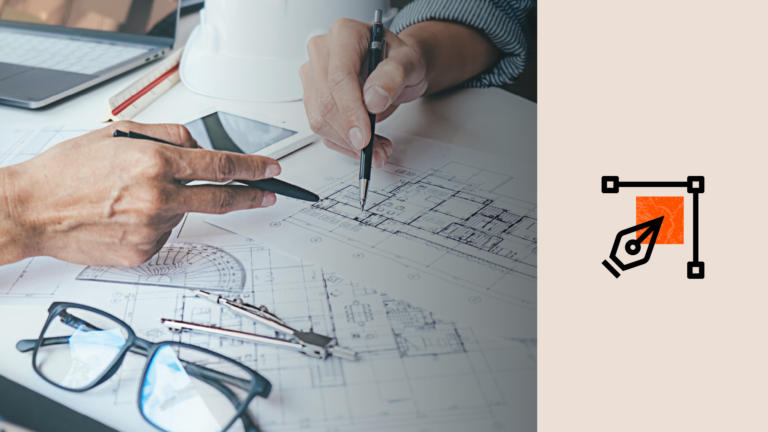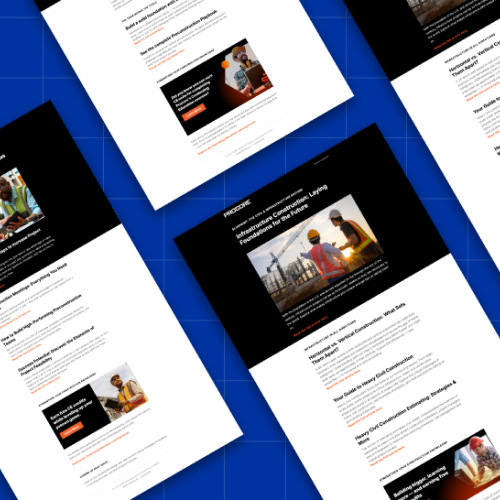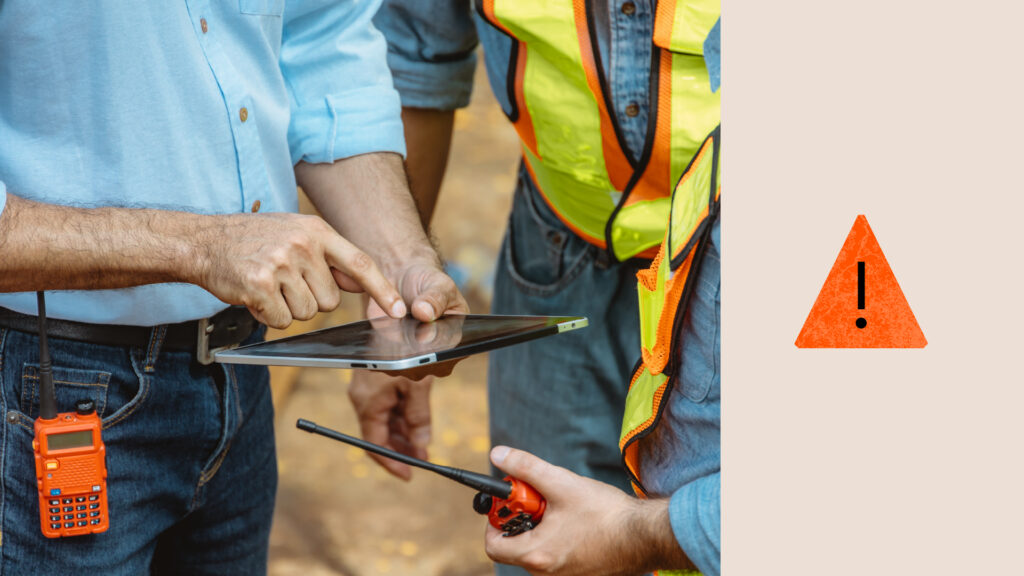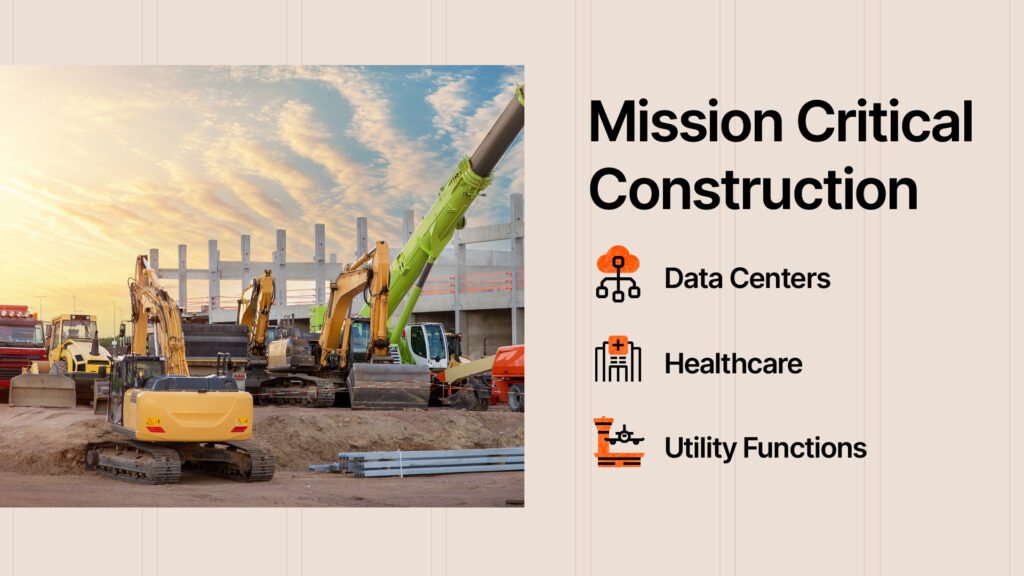— 19 min read
The Role of the Design Manager: Bridging Design and Construction for Project Success
Last Updated Apr 8, 2025
Last Updated Apr 8, 2025

On complex construction projects, particularly those delivered through design-build and other alternative delivery methods, the lines between design and construction are increasingly blurred. Success depends on seamless collaboration, clear communication and shared responsibility between all parties involved. This is where the design manager steps in — leading the effort to align the design team, the general contractor and the project’s various stakeholders.
While architects may have internal design managers to coordinate subconsultants, the general contractor’s design manager plays a very different role. Embedded within the contractor’s team, they act as a central point of communication, balancing owner requirements with constructability, cost and schedule demands. The design manager helps align the design process with the realities of construction, bringing practical insight to decisions made long before ground is broken.
This article examines the role of the design manager within a general contractor’s team. It looks at how they lead the preconstruction design effort, manage risk, coordinate stakeholders and deliver value on projects where success hinges on bringing design and construction into alignment from day one.
Table of contents
What is a design manager?
On a general contractor’s team, the design manager is responsible for leading the preconstruction design effort. Their role goes beyond simply reviewing construction drawings or coordinating consultants — they are directly accountable for guiding the design process in a way that aligns with the project’s cost, schedule and constructability requirements. Working closely with both the design team and the contractor’s project management staff, the design manager helps deliver a fully developed and compliant design that meets the owner’s performance goals.
At its core, this role is about communication. The design manager serves as the primary connection point between key players on the project: the owner and stakeholder groups, design consultants, estimators, schedulers and field teams. They translate design decisions into practical construction strategies so that all parties are working from the same understanding as the design evolves.
When owner priorities shift, stakeholder requirements emerge or different design trades need to coordinate, it’s the design manager who keeps the process moving forward in a structured and transparent way.
Design managers on the general contractor side are typically brought in under alternative delivery contracts — most commonly design-build — where the contractor holds the design contract and plays an active role in design development.
In these scenarios, the general contractor assumes responsibility for constructing the project and also for managing design risk. By leading the design process, the design manager helps the contractor influence design outcomes, making informed decisions that impact everything from material selections to construction sequencing. Without this role, projects that require this level of integration between design and construction would struggle to maintain alignment across teams.
When and Why Design Managers Are Needed
The role of a design manager on the general contractor’s team typically comes into play on projects that follow alternative delivery methods. These models place greater responsibility on the contractor, including oversight of design development and accountability for delivering the finished project. It’s a shift that changes how teams approach collaboration, decision-making and risk — requiring dedicated leadership to guide a more integrated process.
Delivery Methods Requiring Design Managers
The design manager’s role is closely tied to specific project delivery methods where the contractor has a greater influence over the design.
- Design-build: In this project delivery method, the contractor manages the design team and is responsible for both the design and construction phases. The design manager plays a important role in overseeing the design process to ensure that constructability, cost and schedule are considered from the outset.
- Progressive design-build: A two-phase approach where the contractor and design team are selected early and work collaboratively with the owner to develop the design before locking in the final price. Here, the design manager plays a key role in guiding design development alongside evolving owner requirements, balancing priorities and helping the team arrive at the best-value solution.
- Public-private partnerships (P3 or PPP): These complex contracts often involve private financing and require a single point of responsibility for delivering both design and construction. The design manager helps manage risk by overseeing the design’s compliance with both the project’s performance requirements and contractual obligations, while also managing stakeholder expectations.
Why Design Managers Matter
On projects where the contractor is responsible for delivering both the design and construction, managing risk starts with managing the design process. Without a design manager, there’s a higher likelihood of misalignment between what’s being designed and what’s practical, affordable or code-compliant to build.
A design manager offers the following key benefits.
Managing Design Risk
They provide oversight of design decisions that carry cost, schedule or constructability implications. By keeping a close eye on how design choices impact the overall project, they help minimize downstream issues.
Integrating Constructability into Design
Because they sit within the contractor’s team, they can apply real-world construction insight early in the design phase. This prevents costly redesigns and guarantees that the design reflects how the project will be built.
Aligning Design Development with Owner Requirements
Owner priorities often evolve over the course of a project. The design manager helps track those changes, makes sure they are communicated to the design team and works to maintain alignment with project goals and contractual requirements.
Design Manager vs. Architect’s Program Manager
While both the design manager and architect's program manager are involved in design coordination, their responsibilities — and who they represent — are fundamentally different.
Role of the General Contractor’s Design Manager
A design manager on the contractor’s team operates at the intersection of design, construction and stakeholder priorities. Their role extends beyond managing deliverables; they are responsible for integrating constructability, cost and schedule considerations into the design process from day one. Because the general contractor often holds the design contract in alternative delivery methods, the design manager has contractual authority to influence design decisions and manage the risk associated with them.
This role is as much about communication and alignment as it is about technical design management. The design manager acts as the conduit between the owner’s evolving requirements, the design consultants’ work and the construction team’s execution strategy. Their ability to handle competing priorities and facilitate timely decision-making helps maintain project momentum while reducing the potential for costly redesign or scope creep.
Role of the Architect’s Program Manager
An architect’s program manager typically focuses on managing the internal design process within the design team. They coordinate among subconsultants, track design milestones and verify that design deliverables meet the client’s program and quality expectations. However, they are not responsible for construction considerations like cost control, construction sequencing or field coordination.
Why the Distinction Matters
A general contractor’s design manager operates within a framework where they are accountable for managing both design outcomes and construction risk. Their role is not limited to design development—they are responsible for how design decisions impact constructability, procurement and the ultimate success of construction delivery.
This distinction is particularly important in alternative delivery methods like design-build, where the contractor holds design responsibility and carries performance risk. Without a dedicated design manager in place, there is a greater chance for misalignment between what is designed and what can be built, leading to delays, cost overruns or quality issues.
Stay updated on what’s happening in construction.
Subscribe to Blueprint, Procore’s free construction newsletter, to get content from industry experts delivered straight to your inbox.

Core Responsibilities of a Design Manager
The role of a design manager is defined by their ability to manage complexity. As projects grow in scale and delivery models shift more design accountability to contractors, design managers take on responsibilities that are both technical and strategic.
They lead the effort to maintain clarity in decision-making, track how design development impacts procurement and construction and manage the constant exchange of information between stakeholders. Far from being limited to coordination, the design manager’s role is central to assuring that design decisions are informed by construction realities — allowing teams to balance evolving owner priorities with the demands of budget, schedule and constructability.
Managing Design Progress
The design manager is responsible for tracking and directing the progress of design development throughout preconstruction. This role involves documenting decisions, maintaining visibility over design milestones and assuring that evolving requirements are consistently communicated across teams.
- Develops and maintains design progress tracking tools: These tools—ranging from spreadsheets to more advanced model-based platforms—help track design milestones, document key decisions and align the team on what’s been resolved versus what’s still outstanding.
- Tracks key design decisions and their downstream impacts: Each decision made during design has potential impacts on cost, schedule and constructability. The design manager tracks these developments in real time and communicates their implications to both design and construction stakeholders.
Design managers are constantly tracking the exchange of information in all different mediums while maintaining a clear trail of decision-making that ties back to the contract and owner requirements.
Kabri Lehrman-Schmid
Superintendent & Project Leader
Hensel Phelps
Coordinating Stakeholders
Effective coordination is at the heart of design management. The design manager brings together diverse stakeholder groups to collaborate on design solutions that meet owner expectations while staying on budget and schedule.
- Facilitates communication between key players: This includes architects, engineers, design consultants, owners and stakeholder groups, as well as internal estimating, scheduling and project management teams.
- Translates design decisions into actionable insights for construction teams: The design manager makes sure the project team understands not just what was decided, but how that decision affects construction methods, sequencing and procurement. Their job is to bridge the language and priorities of designers and builders.
Mitigating Risk
Design decisions made in preconstruction carry long-term consequences. The design manager plays a proactive role in identifying and mitigating risks before they impact the project.
- Identifies constructability issues early: By collaborating with superintendents and field teams, design managers flag potential construction challenges and work with designers to develop practical solutions.
- Manages phased permitting challenges and design freeze milestones: On fast-track projects with phased permitting, design managers balance the need to secure permits and start construction with the importance of locking in key design decisions at the right time—referred to as design freeze milestones. These milestones lock in portions of the design early enough to support procurement, permitting and construction, while minimizing the risk of late-stage changes disrupting the project.
- Balances cost, schedule and quality during design development: As design evolves, the design manager weighs the implications of changes, helping owners and stakeholders make informed decisions about what to prioritize.
“One of the biggest roles a design manager plays is mediating major timing and risk decisions between the need to go build and the desire to keep designing.”
Kabri Lehrman-Schmid
Superintendent & Project Leader
Hensel Phelps
Skills and Backgrounds of Effective Design Managers
Design managers work at the intersection of design and construction, which demands a versatile set of skills and experience. Their ability to understand and coordinate complex processes makes them a vital part of any project team, particularly in alternative delivery methods such as design-build. To succeed, they need both technical expertise and the ability to manage communication between diverse project stakeholders.
A Blend of Design Knowledge and Construction Experience
Effective design managers speak the language of designers and builders alike. They understand how architects and engineers approach design development and they are familiar with the technical requirements and performance criteria that guide the design process. At the same time, they have a practical understanding of construction logistics — how projects are sequenced in the field, how materials are procured and delivered and how site constraints impact construction means and methods.
This combination of knowledge allows them to assess design decisions in real time, identifying potential constructability issues before they affect the schedule or budget. They translate design intent into actionable strategies that work on-site, making them an essential link between design and construction teams.
Common Backgrounds in Design Management
Design managers come from a wide range of professional backgrounds. Many have experience as architects or engineers, where they developed an understanding of design systems and consultant coordination. Others have spent time in field operations, working as superintendents or project engineers, where they gained firsthand knowledge of construction processes and contractor priorities.
Construction management professionals are also well-represented in design management roles. These individuals often bring experience managing complex projects with multiple stakeholders, tracking design progress and facilitating communication between teams. Their strength lies in aligning the technical precision of design with the on-the-ground realities of construction delivery.
Adaptability and Strong Communication Skills
Regardless of their path, successful design managers are highly adaptable. They are able to shift between high-level project planning and detailed design discussions, often within the same meeting. They are skilled communicators who can facilitate discussions between owners, design consultants and construction teams, making sure that everyone remains aligned on project goals.
Their role requires consistent attention to detail, a strong grasp of contract requirements and the ability to manage large volumes of information. By combining technical expertise with leadership and communication skills, design managers help deliver projects that meet performance expectations while staying on time and on budget.
Tools and Processes in Design Management
Design managers are responsible for keeping the design process organized, transparent and aligned with the project’s construction objectives. To do this effectively, they rely on a variety of tools and structured processes that allow them to track design development, manage communication between stakeholders and maintain an accurate record of decisions.
These tools are not one-size-fits-all; they are often tailored to the complexity of the project, the delivery method and the composition of the project team.
Common Tools Used in Design Management
On large projects, the volume of design information can be significant. Design managers rely on several key tools to organize and track this information.
3D Modeling Software
Tools like Revit, Rhino and reality capture models allow teams to visualize the design in three dimensions. Early engagement with models helps identify potential constructability issues and supports coordination between disciplines.
Document Control Platforms
These systems manage the distribution and approval of design documents so that all stakeholders are working from the most current information. Version control is central to maintaining consistency across teams.
Spreadsheets and Decision Logs
Spreadsheets remain a reliable way to track decisions, stakeholder input and constructability reviews. They offer flexibility for recording and managing data across multiple disciplines.
Clash Detection & Specification Comparison Tools
Clash detection software identifies conflicts between design systems before construction begins. Comparison tools track changes to performance specifications and owner requirements as the design evolves.
Processes That Support Design Management
The tools a design manager uses are only effective when supported by well-defined processes. These provide structure to the flow of information and decision-making throughout the project.
Managing Iterative Design Submissions and Document Version Control
Design management requires a structured approach to receiving, reviewing and distributing design submissions. With designs often developing in phases, it’s important to control which versions are shared with which stakeholders. Document version control processes guarantee that teams are always working from current information, reducing the risk of miscommunication or rework.
Facilitating Design Coordination Meetings
Regular design coordination meetings are a core part of the design management process. These meetings bring together design consultants, owners, estimators and construction teams to review progress, resolve outstanding issues and plan for upcoming milestones. Increasingly, these meetings take place in virtual environments, allowing teams spread across different locations to collaborate in real time.
Maintaining Clear Records of Decision-Making and Compliance
One of the design manager’s most important responsibilities is maintaining a clear record of decisions. Every design decision must be documented, including who was involved, what was agreed upon and how it aligns with project requirements. These records support compliance with contract documents and provide a reference for future phases of the project.
Common Challenges and How Design Managers Overcome Them
On design-build and other alternative delivery projects, the role of the design manager is often defined by their ability to manage competing priorities. Balancing the needs of owners, designers and contractors requires clear communication, careful planning and a willingness to negotiate solutions that support the project’s goals. Below are some of the common challenges design managers face—and how they work through them.
Communication Tensions Between Stakeholders
One of the most common challenges is managing the flow of information between stakeholders who have different priorities and expectations. Design consultants often focus on maintaining the integrity of their design, while owners emphasize stakeholder needs and end-user requirements. At the same time, contractors are concerned with constructability, cost and schedule.
A key tension point often occurs during phased permitting. Design managers may need to secure permits for structural elements or early site work before the full architectural design is finalized. This requires careful negotiation with design teams to freeze certain aspects of the design, while still allowing flexibility in areas that are still in development. Clear communication about what needs to be finalized — and why — is key to keeping the project on schedule without compromising the quality of the design.
Managing Conflicting Priorities Across Teams
Design managers are constantly balancing competing interests. Owners may push for last-minute changes to meet stakeholder expectations. Designers may resist locking in decisions too early, preferring to keep options open for further refinement. Meanwhile, contractors need certainty in the design to develop accurate cost estimates and construction schedules.
These conflicting priorities create pressure points throughout the design process. The design manager’s role is to align the team around shared goals and facilitate decision-making that considers each party’s needs. This often involves setting clear milestones for design freezes, defining decision deadlines and communicating the downstream impacts of delays or late-stage changes.
Case Study: Reducing Costs Through Design Reconfiguration
During the design phase of a specialized lab facility, the project team faced rising material costs and a growing list of stakeholder requirements. The building’s complex systems—particularly the extensive stainless steel ductwork needed for lab exhaust—were identified as significant factors in the project's updated estimate.
The design manager worked closely with the design team and owner to find a solution. By reconfiguring one of the building wings, the team was able to stack lab spaces vertically. This adjustment reduced the total length of ductwork by nearly 30 percent, leading to significant cost savings without compromising the building’s performance requirements.
This collaborative approach addressed immediate budget concerns and also maintained alignment between the owner’s priorities and the project’s construction goals. It’s a clear example of how early design management can lead to smarter, more efficient outcomes.
The Value of Design Management in Preconstruction
Bringing a design manager into the preconstruction phase creates clear advantages—for the project team and for owners. On complex projects, where design decisions directly impact cost, schedule and constructability, the design manager plays a central role in keeping teams aligned and the process on track.
Driving Efficiency and Reducing Risk
Design managers provide early input that helps minimize rework, avoid constructability issues and keep design development tied to project goals. Their involvement in early coordination accelerates decision-making, which speeds up permitting and procurement. Without a dedicated design manager overseeing the process, design decisions can become fragmented, leading to misalignment between teams, delays in approval cycles and costly redesigns.
By managing the flow of information and maintaining accountability, design managers reduce the risk of delays caused by uncoordinated design decisions. Their role bridges the gap between design and construction from day one — helping the team make informed decisions early and avoid problems later in the process.
Case Example: Driving Schedule Efficiency Through Early Design Coordination
On a fast-track infrastructure project, the team confronted a major challenge: a new electrical duct bank needed to be installed beneath an existing system, which was critical to ongoing operations. The original plan required carefully building a new system without impacting the existing infrastructure, before starting to demolish the existing system, a process expected to add two years to the project schedule.
The design manager worked with the design team, construction leads and key stakeholders to explore alternative solutions. After a series of coordination meetings and constructability reviews, the team proposed suspending the existing duct bank in place while construction continued below. This approach maintained system functionality and allowed construction to proceed without delay.
By rethinking the design early in the process, the team eliminated two years from the schedule and avoided significant disruptions to operations. It’s an example of how early design management can lead to creative solutions that save time and reduce risk—while keeping complex projects on track.
How Owners Benefit from the Design Manager
For owners, having a design manager on the contractor’s team can bring additional clarity and confidence to the process. Owners benefit from having a single point of contact for design status and construction impacts, rather than navigating communication through multiple consultants and contractors. This streamlines communication, making it easier to get timely updates and clear answers.
Design managers provide clarity and visibility into how design decisions impact cost, schedule and construction. By maintaining detailed records of design decisions and their implications, they help owners understand how stakeholder priorities are reflected in the evolving design. This builds trust and greater transparency into the design-build process and provides assurance that the project is progressing according to the owner’s goals.
In addition, the design manager supports stakeholder engagement throughout design development. By facilitating conversations between the owner, end users and the design team, they assure performance requirements are met and that the final product aligns with the project vision.
For owners who aren’t familiar with alternative delivery, the idea of a design manager may not immediately click. But when they see how this role supports their stakeholders, balances priorities and manages risk, it becomes a major factor in winning their trust — and the job.
Kabri Lehrman-Schmid
Superintendent & Project Leader
Hensel Phelps
The Increasing Importance of Design Management
As projects become more complex and delivery models place greater responsibility on contractors, design management has evolved from a support role into a necessity. The design manager provides the structure and leadership to drive informed decision-making, balance competing priorities and maintain alignment across teams — all while the project is still on paper. Their ability to guide the design process with a clear focus on constructability, cost and schedule creates measurable value for both the project team and the owner.
As project delivery methods continue to evolve and project complexity increases, the need for dedicated design management expertise will only grow. Teams that prioritize this role are better positioned to deliver coordinated, efficient projects that meet performance expectations and achieve successful outcomes.
Was this article helpful?
Thank you for your submission.
0%
0%
You voted that this article was . Was this a mistake? If so, change your vote here.
Scroll less, learn more about construction.
Subscribe to The Blueprint, Procore’s construction newsletter, to get content from industry experts delivered straight to your inbox.
By clicking this button, you agree to our Privacy Notice and Terms of Service.
Categories:
Tags:
Written by
Kabri Lehrman-Schmid
Kabri Lehrman-Schmid (she/her) is a construction superintendent at Hensel Phelps, where she has led over $1.9B in large-scale building projects by combining strategic planning expertise with a deep commitment to team well-being and communication. Under her leadership, complex jobsites become places where technical execution and human connection go hand in hand. Her national influence extends beyond the jobsite through her speaking, writing, and advocacy—advancing industry-wide conversations on workforce mental health, inclusion, and psychological safety. Kabri’s work has earned national recognition, including being named one of Engineering News-Record’s 2023 Top 20 Under 40 professionals.
View profileTaylor Riso
73 articles
Taylor Riso is a marketing professional with more than 10 years of experience in the construction industry. Skilled in content development and marketing strategies, she leverages her diverse experience to help professionals in the built environment. She currently resides in Portland, Oregon.
View profileExplore more helpful resources

Control Tolerance: Managing the Range of Deviation
As designs begin to translate into physical structures, field engineers are responsible for maintaining quality and managing risk across a project’s trades and phases. This requires an ability to manage...

Construction Federated Models: Democratizing Data for Improved Collaboration
Construction has long relied on representations of structures for planning purposes. Technological innovation has changed how that looks and functions, though. Hand-created construction drawings have given way to computer-aided design...

Tackling the Top 10 Construction Industry Issues
The construction industry is constantly evolving, bringing both opportunities and challenges. Companies must navigate an array of construction industry issues — from workforce shortages to integrating new technologies into their...

Mission Critical Construction: Strategies for Success
Mission critical construction involves building structures whose functions cannot afford to fail, as any disruptions can lead to significant consequences for society. Keeping data centers, hospitals, power plants and other...